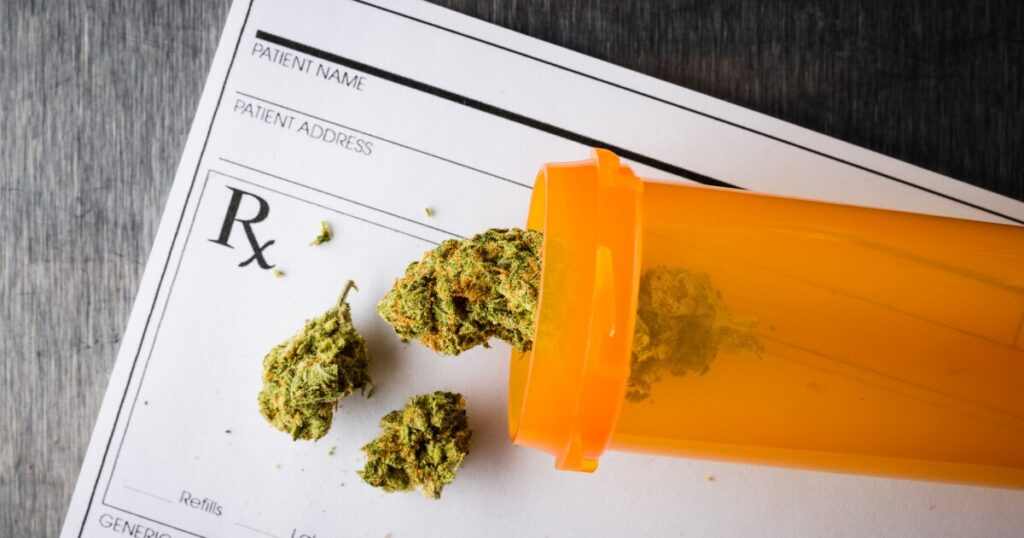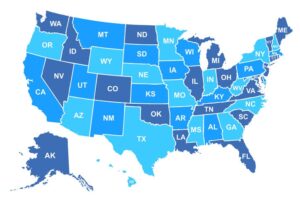Marijuana as a Schedule III drug? What the new classification means for insurance companies

It looks like a new drug might be added to your health plan’s formulary — if your insurance carrier and employer can keep up with federal law.
The Department of Health and Human Services recommended to the Drug Enforcement Administration that marijuana move to the Schedule III drug category, making the substance legally accessible through a prescription at the federal level. Marijuana is currently legal for medical use in 39 states, and 88% of U.S. adults believe it should be legal for medical purposes everywhere, according to the Pew Research Center.
It’s safe to say that a majority of the nation doesn’t view marijuana as representative of its current category, Schedule I, which includes drugs with high potential for abuse and harm, like heroin. Even Fentanyl is technically classified as less dangerous, being a Schedule II drug. But it looks like the U.S. political landscape is only now ready to recognize that, says William Van Faasen, former chairman and CEO of Blue Cross Blue Shield Massachusetts and board member of EO Care, a clinically-guided solution for employers looking to integrate cannabis into their health benefits.
Read more: Weed at work: How HR leaders should handle the legalization of marijuana
“What motivated the change had more to do with the political reality than the scientific reality,” says Van Faasen. “People have known for some time that there are legitimate medical applications for the use of cannabis, like epilepsy treatment and chronic pain management.”
Rescheduling marijuana would mean that employers and insurance carriers would be pressured to include the drug in their health plans, Van Faasen explains. Other drugs on the Schedule III list, such as ketamine, anabolic steroids, and testosterone, are already available as viable healthcare treatments.
“Medical cannabis would end up being the third most-prescribed drug among the Schedule III drugs,” he says. “In many applications, medical marijuana is a cheaper, more effective and safer substitute for current drug therapies, like Oxycodone or other potentially harmful drugs. Enlightened health plans will say we need to embrace where our [members] are.”
Read more: Virtual physical therapy may be a key to battling the opioid crisis
For example, the University of Michigan found that patients using medical marijuana to manage their chronic pain reported a 64% decrease in their use of opioids, while also reporting fewer side effects and an improved quality of life. Still, Van Faasen predicts that insurance carriers will delay adding marijuana to their formularies, even if it’s rescheduled.
“I’ve seen a lack of willingness of health plans to cover emerging and populous kinds of benefits,” he says. “We shouldn’t stick our head in the sand and wait for a state legislative mandate or a Medicare decision.”
Van Faasen challenges insurers to begin considering how they would cover medical marijuana and obtain clinical guidance for themselves and their members. Just like any other drug, patients should know the best form to take marijuana in, the appropriate dosage and time frame for treatment.
Read more: Is drug testing for marijuana a thing of the past?
As for employers, Van Faasen advises them to prepare to integrate marijuana into their wellness solutions from their health plan offerings and EAPs to their disability benefits. Carriers and employers can’t outrun this, and patients could benefit from the rescheduling, he says.
“If I were the CEO of a health plan today, I would be all over this — it’s a huge opportunity to differentiate yourself in the public eye,” says Van Faasen. “For the first time since being placed as a Schedule I drug in Nixon’s ‘war on drugs’ days, the [U.S.] will acknowledge that marijuana has medicinal value.”



